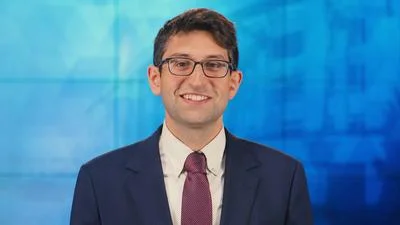Environment Subcommittee Ranking Member Paul Tonko (D-NY) delivered the following remarks during an Environment Subcommittee hearing today today on, "H.R. 2278, The Responsible Disposal Reauthorzation Act of 2017, and H.R. 2389, To Reauthorize the West Valley Democstration Project and for Other Purposes:
Thank you, Mr. Chairman. First, I want to welcome our colleague from New York, Mr. Reed, to discuss his bill on the West Valley Demonstration Project.
I also want to welcome our other witnesses, Mark Gilbertson of DOE’s Office of Environmental Management, and Noah Shaw, who I am proud to say is representing my former employer, the New York State Energy Research and Development Authority. Thank you both for joining us for this legislative hearing on two bills: H.R. 2278, the Responsible Disposal Reauthorization Act of 2017, and H.R. 2389, to reauthorize the West Valley demonstration project.
While this Committee, under the leadership of Chairman Shimkus, has made progress in addressing some of our nation’s most significant nuclear waste challenges, a number of outstanding issues remain.
DOE’s Office of Environmental Management was established to remediate sites contaminated with high-level radioactive waste, spent nuclear fuel, excess uranium and plutonium, and contaminated soil and groundwater. These sites, located across the country, are dealing with the legacy of our nation’s entry into the atomic age.
The Uranium Mill Tailings Radiation Control Act established a process for remediating inactive uranium-ore processing sites, such as the site in Grand Junction, Colorado.
H.R. 2278 would authorize DOE to continue to operate the Cheney Disposal Cell until Sept. 30, 2048 or until the disposal cell is filled to capacity. Currently, DOE is authorized to operate this cell through September 2023.
I want to give some additional attention to Mr. Reed’s legislation.
The bill authorizes $75 million for the West Valley Demonstration Project for Fiscal Years 2017 through 2026. This is identical to the amount appropriated in Fiscal Year 2018 and will ensure the cleanup will continue on schedule.
But West Valley is a unique site.
Its history is unlike other properties, and this has caused a point of disagreement between the relevant stakeholders for decades, which is addressed in the other provision of H.R. 2389.
From 1966 to 1972, the Western New York Nuclear Service Center was the only privately owned facility for spent nuclear fuel reprocessing in the United States.
When that business ceased operating, the site eventually reverted back to its owner, New York State.
And of course DOE’s predecessor, the Atomic Energy Commission, was intimately involved in the operation of the site.
Approximately 60 percent of the spent nuclear fuel reprocessed at the site came from Hanford and 80 percent of the recovered plutonium was returned to Hanford.
Ultimately, this activity resulted in transuranic waste and high-level nuclear waste continuing to be stored at the site.
This bill is not the first time Congress has had to consider a unique solution to address West Valley. In 1980, Congress passed the West Valley Demonstration Project Act, which directed DOE to carry out high-level radioactive waste management. This bill made DOE responsible for 90 percent of the costs of the site’s cleanup.
And two years later, the Nuclear Waste Policy Act made it clear that “costs resulting from permanent disposal of high-level radioactive wastes from atomic energy defense activities should be paid by the Federal Government."
However, since 1986, based on a DOE IG report, DOE has classified the high-level waste at West Valley as “commercial waste" rather than waste deriving from atomic energy defense activities. Under this formulation, DOE believes the cost for disposal of the wastes should be borne by the State of New York due to its ownership of the site.
And that is the crux of the disagreement.
I understand that DOE will reiterate that under the statute, it cannot own the wastes at West Valley.
But that is immaterial to the question of who is responsible for bearing the cost of cleaning up and disposing of it.
The standard under the Nuclear Waste Policy Act is whether the waste was generated “in whole or in part" from “any atomic energy defense activity" or at “any facility used in connection with any such activity." Under the Act, it is either defense-related or not.
So were the wastes generated as a result of atomic energy defense activities? I think the record is clear that this is the case for West Valley. The high-level radioactive waste and transuranic waste left at this site are primarily from atomic energy defense activities and should be disposed of as such.
But obviously, this issue remains unsettled, which is why we are here today.
I look forward to a full debate on West Valley this morning. And even if this bill does not move forward, I will continue to urge DOE to engage with the State of New York to try to reach an understanding on this issue.
Mr. Chairman, thank you again. I look forward to hearing from our witnesses.




